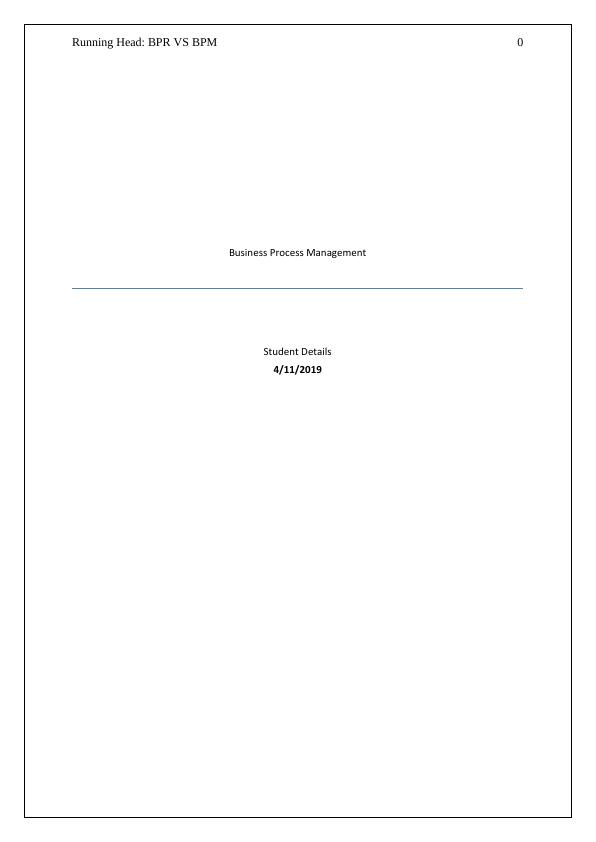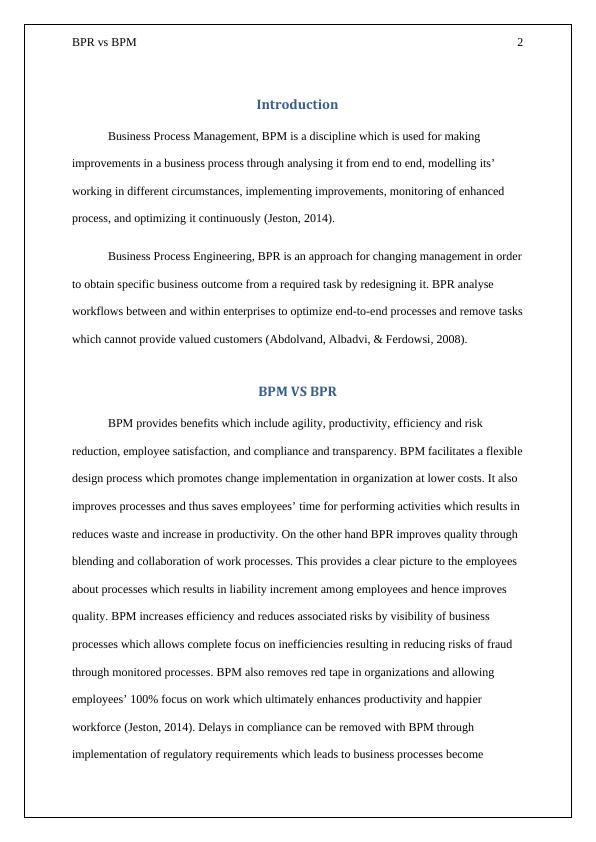BPR vs BPM
Compare the benefits and shortcomings of BPM vs BPR and explore ways of combining them in a company's continuous improvement methodology. Also, create a table to answer questions about BPMN.
6 Pages834 Words92 Views
Added on 2023-01-18
About This Document
This article discusses the differences between Business Process Reengineering (BPR) and Business Process Management (BPM) in terms of benefits, shortcomings, and implementation steps. It explores how BPM improves agility, productivity, efficiency, and risk reduction, while BPR focuses on quality improvement and cost reduction. The article also highlights the steps involved in the BPM and BPR life cycles and their respective implementation processes.
BPR vs BPM
Compare the benefits and shortcomings of BPM vs BPR and explore ways of combining them in a company's continuous improvement methodology. Also, create a table to answer questions about BPMN.
Added on 2023-01-18
ShareRelated Documents
End of preview
Want to access all the pages? Upload your documents or become a member.
Business Process Engineering: A Review of Research Methods, Findings, and Issues
|10
|3058
|423
Introduction to Business Process Management
|12
|1486
|64
Advantages and Disadvantages of BPM vs BRP
|12
|1397
|60
Business Process Management
|13
|1925
|90
Business Process Management
|15
|2071
|51
Business Process Management
|11
|1663
|63



